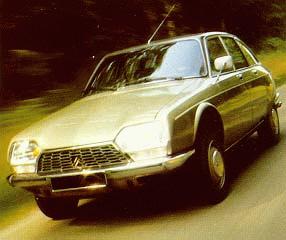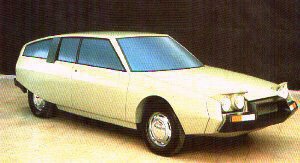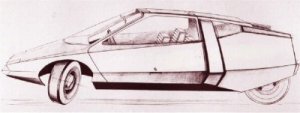The first years (70-75)
The GS was introduced by Citroën in 1970. It lasted untill
1986 before the car was taken out of production. In nearly sixteen
years, the GS undertook a lot of changes. The GS was the first small
car with the hydropneumatic suspension, which was also used in the
legendary Citroën ID/DS. For this and other aspects, like the styling and
the revolutionarity of the car, the GS was awarded "Car of the year 1971". At the Car Saloon
of Geneva, the GS is awarded the "Car Style Award" by an international jury.
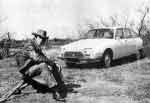 |
 |
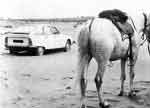 |
 |
The Press introduction of the GS was in Ireland. The above pictures are the first offical Press Photo's of the new GS.
Car of the year
The Car of the year award is probally the most prestigious a car manufacturer can win. The Citroën GS was the first Citroën to win this award. Later the CX (1975) and the XM (1990) would follow. The award was handed out on February 11th 1971 to the General Director of Citroën, Raymond Ravenel in the Hilton Hotel in Amsterdam. Speeches where made by Paul Frere, carjournalist and the Belgium President of the jury, Fred van der Vlugt car journalist and by Raymond Ravanel.
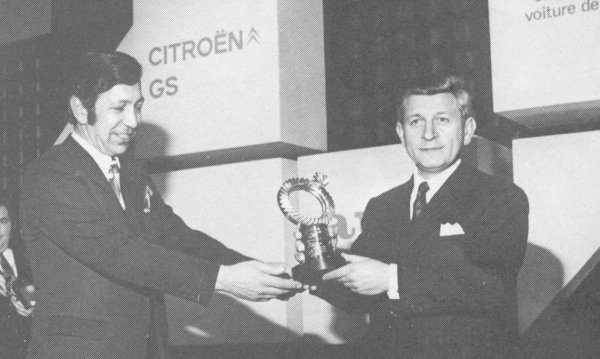 |
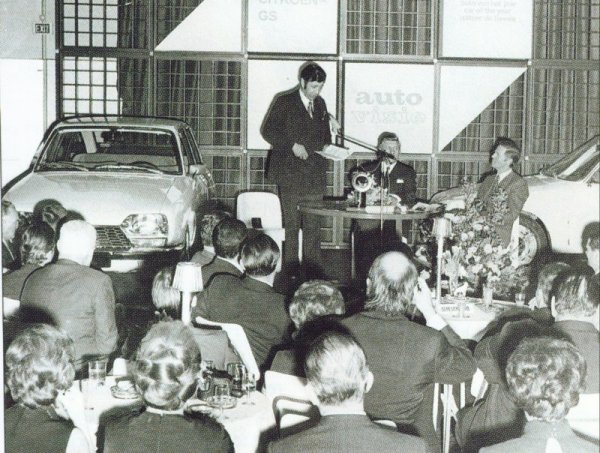 |
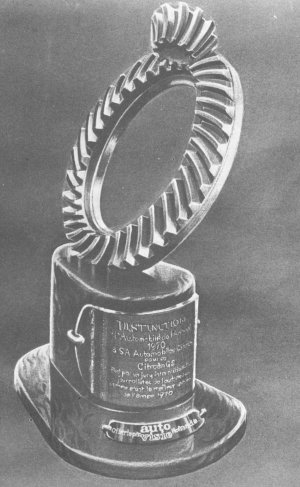 |
Speech of Fred van der Vlugt in French
Speech of Paul Frere in French
Speech of Raymond Ravenel in Dutch
Speech of Raymond Ravenel in French
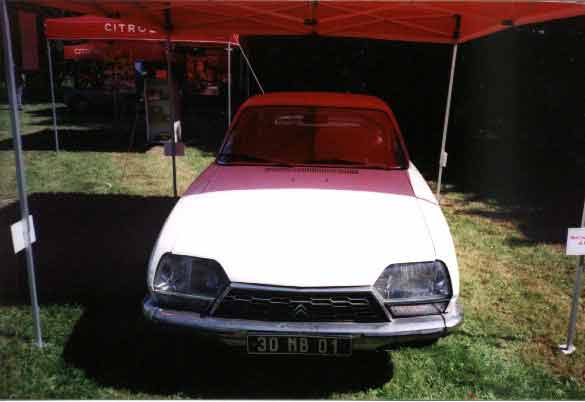 |
This car is the eldest known still existing GS. It was produced in oktober 1970 and has chassisnumber GX-GA00GA3148. |
So production started in 1970 in France. The car was at first only available as berline, at the end of 1971/beginning 1972 the break (stationcar) and service (3-doors GS Break) versions where introduced. The car had a 1015cm3 engine.Which produced 55,5HP at 6500 rpm at his best. It's topspeed was 147 km/h. The model was first available in two versions.The "comfort" and the "club". The price of the confort was F8130,- (Dutch guilders), the club costed F8765,-. Because the 1015cm3 engine of the GS was a bit small, the company started producing the GS club with a 1220cm3 engine. This was a little bit stronger than the 1015cm3, it produced 65,5HP at 6000rpm. It's topspeed was 151km/h.
Flags GSs
As promotional vehicles at sports events and car shows Citroën use GSs which had painted all European flags on them. These cars where also used as promonotional vehicles at the Olympic games of 1972 in Germany. Eventuallly the cars where sold to individual owners, most of them got resprayed very soon. So this Break which still carries the flags is quite rare nowadays.
 |
 |
 |
|
Around 1974 another version was added to the GS program; the Gspécial which became the base version, instead of the GS Confort. The Gspécial was available in both the berline and break versions. In 1975 the GS Pallas, the most luxury version of the GS and the GS X and GS X2 where added to the GS program. The X-versions where the most sportive models. The GS X2 had a bigger engine then the GS X. Of course there was the GS Break which was available in the Gspécial and in the club version. Also Citroën produced a van, based on the break, which was called "service", and was also available as Spécial and Club.
In 1973 Citroën started to produce the GS Birotor. This was due to the cooperation with NSU (who produced the RO80 with a wankelengine). The GS Birotor was a marvellous example of engineering. The Rotary Combustion Engine (wankelengine) in combination with the hydropneumatic suspension, increased the preformance of the car enourmously. For instance, the car could now drive 175 km/h. Although the Birotor was in production for two years, only a small 900 where produced. Citroën recalled the car, and most Birotors where destroyed. This has made the car a real collectors item. A Birotor in good shape can cost a fortune.
GS Bertone Camargue en Ligier GS Coupť.
In the earlie seventies Citroën did research on a GS Coupe. Eventually a couple of prototypes where build. The most famous is the GS Camargue by Bertone (The name 'Camargue' was later sold to Rolls Royce). The GS Camargue (picture left) was based on a standard GS and was presented at the 1972 Car saloon of Geneve. The French carroserie specialist 'Ligier" did also build a GS Coupe prototype (picture right). None of these cars where ever taken in production. Photo's underneath, more sketches for a GS based coupe.
Facts
1970: Introduction of the GS. The GS is at first only available as Berline. The first Models are called "Confort" and "Club", they both have a 1015cc Boxer engine, which produces 55 HP at 6500 R/PM.
1971: The GS is elected "Car of the year 1971" by a jury of European Car Journalists. At the Car Salon of Geneva, the GS is awarded the "Car Style Award" by an international jury. Introduction of the Break (stationcar) and Service (3-door GS Break) both models are available as "Confort" and "Club".
1972: The GS is from now on also available with a 1220cc engine, which produces 59 HP at 6500 R/PM. The GS Break is elected 'best estate car of the year' by the Daily Telegraph Magazine.
1973: The GS Birotor is introduced, the Birotor is famous for his Wankelengine. The Birotor is a product of the co-operation of Citroën and NSU (who produced the RO80 with a wankelengine). This "Rotating Motoring" takes the GS to a topspeed of 175 km/h.
1975: The GS Birotor is taken out of production, after only 847 models produced. Most cars are recalled to the factory and destroyed.
![]()
